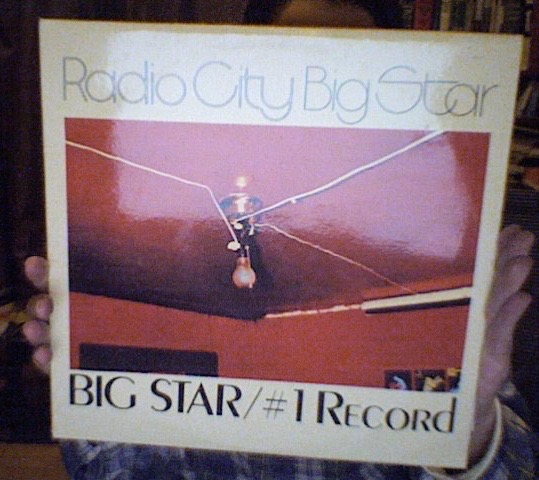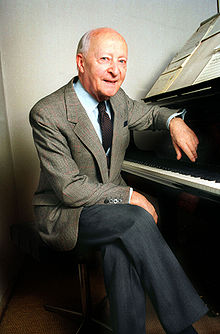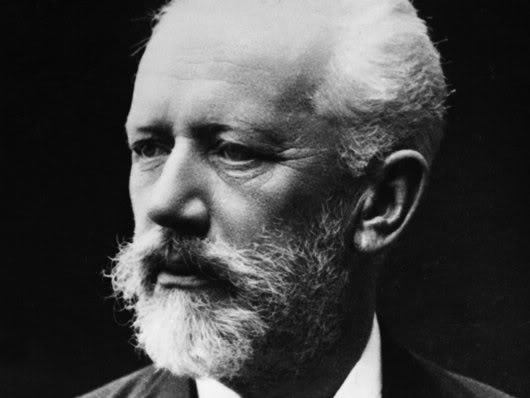Two portraits of the 24-year-old Édith Piaf, who was born Édith Giovanna Gassion, on December 19, 1915. Photos by Jean Gabriel Séruzier, 1940.
One of these days I’ll get around to writing a real essay about La Môme Piaf, who is one of my all-time favorite singers. But for now I will mention only that when I first met my darling dog Edith (Piaf’s namesake), the song “Milord” came to my lips, especially the line “une ombre de la rue.” (My husband found this “shadow of the street” running in traffic on a very busy intersection in North St. Louis City—specifically Natural Bridge, near Grand Avenue—and brought her home to me.) My Edith has the same Parisian cernes, the same tiny, plucky street-waif mien, the same huge-eyed, hungry-hearted courage and nobility. I took this photo within 10 minutes of meeting her, and we haven’t been apart a single day since.

Here is a very late and impossibly moving performance of “Milord” from the early 1960s.
The original French lyrics are provided below, along with my own translation:
Allez venez, Milord
Vous asseoir à ma table
Il fait si froid dehors
Ici, c’est confortable
Laissez-vous faire, Milord
Et prenez bien vos aises
Vos peines sur mon cœur
Et vos pieds sur une chaise
Je vous connais, Milord
Vous ne m’avez jamais vue
Je ne suis qu’une fille du port
Une ombre de la rue
Pourtant, je vous ai frôlé
Quand vous passiez hier
Vous n’étiez pas peu fier
Dame, le ciel vous comblait
Votre foulard de soie
Flottant sur vos épaules
Vous aviez le beau rôle
On aurait dit le roi
Vous marchiez en vainqueur
Au bras d’une demoiselle
Mon Dieu, qu’elle était belle
J’en ai froid dans le cœur
Allez venez, Milord
Vous asseoir à ma table
Il fait si froid dehors
Ici, c’est confortable
Laissez-vous faire, Milord
Et prenez bien vos aises
Vos peines sur mon cœur
Et vos pieds sur une chaise
Je vous connais, Milord
Vous ne m’avez jamais vue
Je ne suis qu’une fille du port
Une ombre de la rue
Dire qu’il suffit parfois
Qu’il y ait un navire
Pour que tout se déchire
Quand le navire s’en va
Il emmenait avec lui
La douce aux yeux si tendres
Qui n’a pas su comprendre
Qu’elle brisait votre vie
L’amour, ça fait pleurer
Comme quoi l’existence
Ça vous donne toutes les chances
Pour les reprendre après
Allez venez, Milord
Vous avez l’air d’un môme
Laissez-vous faire, Milord
Venez dans mon royaume
Je soigne les remords
Je chante la romance
Je chante les milords
Qui n’ont pas eu de chance
Regardez-moi, Milord
Vous ne m’avez jamais vue
Mais vous pleurez, Milord
Ça, je l’aurais jamais cru
Eh, bien voyons, Milord
Souriez-moi, Milord
Mieux que ça, un petit effort
Voilà, c’est ça!
Allez riez, Milord
Allez chantez, Milord
Ta da da da da da
Ta da da da da da
Ta da da da da da
Ta da da da da da
Ta da da da da da
Mais oui, dansez, Milord
Ta da da da da da
Ta da da da da da
Ta da da da da da
Bravo, Milord
Ta da da da da da
Ta da da da da da
Ta da da da da da
Encore, Milord
Ta da da da da da
Ta da da da da da
Ta da da da da da
Ta da da da da da
Ta da da da da da
Ta da da da da da
Ta da da da da da
(Written by Marguerite Monnot, Joseph Mustacchi)
Come along, Milord!
Sit at my table;
It is so cold, outside,
Here it’s comfortable.
Relax, Milord,
and put yourself at ease,
your troubles on my heart,
and your feet on a chair.
I recognize you, Milord.
You’ve never seen me:
I’m just a girl from the docks,
A shadow of the street…
But I brushed right by you
while you were passing yesterday.
You were more than a little proud.
God! The heavens filled you.
Your silk scarf
floating on your shoulders,
you were so beautiful
one might have said the king…
You were walking victoriously
A woman on your arm,
My God! How beautiful she was!
I felt coldness in my heart.
(chorus)
Say that it’s enough sometimes
For there to be a boat
So that everything falls apart
When the boat leaves.
It took away with it
The sweet girl with the eyes so tender
who had no way of comprehending that
she was breaking your life.
Love, it makes for weeping
like this very existence,
which gives you every chance
only to snatch it back afterwards…
Come along, Milord!
You look like a waif!
Relax, Milord,
Come into my kingdom:
I heal remorse,
I sing romance,
I sing about milords,
who haven’t had much luck!
Look at me, Milord,
You’ve never seen me before…
But—you’re crying, Milord?
I never would have believed it!
Ah well, there there, Milord!
Smile at me, Milord!
Better than that! A bit of effort!
There we are!
Come along, laugh, Milord!
Come along, sing, Milord!
La-la-la…
Yes, dance, Milord!
La-la-la… Bravo Milord!
La-la-la… Again Milord! … La-la-la…
(Translation by René Spencer Saller, copyright 2016)
And just for good measure, here is a 1954 performance of “L’Accordéoniste,” another favorite. The song was composed expressly for Piaf by Michel Emer, shortly before he was deployed to the front (in World War II).
La fille de joie est belle
Au coin de la rue là-bas
Elle a une clientèle
Qui lui remplit son bas
Quand son boulot s’achève
Elle s’en va à son tour
Chercher un peu de rêve
Dans un bal du faubourg
Son homme est un artiste
C’est un drôle de petit gars
Un accordéoniste
Qui sait jouer la java
Elle écoute la java
Mais elle ne la danse pas
Elle ne regarde même pas la piste
Et ses yeux amoureux
Suivent le jeu nerveux
Et les doigts secs et longues de l’artiste
Ça lui rentre dans la peau
Par le bas, par le haut
Elle a envie de chanter c’est physique
Tout son être est tendu
Son souffle est suspendu
C’est une vraie tordue de la musique
La fille de joie est triste
Au coin de la rue là-bas
Son accordéoniste
Il est parti soldat
Quand y reviendra de la guerre
Ils prendront une maison
Elle sera la caissière
Et lui, sera le patron
Que la vie sera belle
Ils seront de vrais pachas
Et tous les soirs pour elle
Il jouera la java
Elle écoute la java
Qu’elle fredonne tout bas
Elle revoit son accordéoniste
Et ses yeux amoureux
Suivent le jeu nerveux
Et les doigts secs et longs de l’artiste
Ça lui rentre dans la peau
Par le bas, par le haut
Elle a envie pleurer c’est physique
Tout son être est tendu
Son souffle est suspendu
C’est une vraie tordue de la musique
La fille de joie est seule
Au coin de la rue là-bas
Les filles qui font la gueule
Les hommes n’en veulent pas
Et tant pis si elle crève
Son homme ne reviendra plus
Adieux tous les beaux rêves
Sa vie elle est foutue
Pourtant ses jambes tristes
L’emmènent au boui-boui
Où y a un autre artiste
Qui joue toute la nuit…
Elle écoute la java
Elle entend la java…
Elle a fermé les yeux…
Et doigts secs et nerveux
Ça lui rentre dans la peau
Par le bas, par le haut
Elle a envie gueuler c’est physique
Alors pour oublier
Elle s’est mise à danser, à tourner
Au son de la musique…
ARRÊTEZ!
Arrêtez la musique…
(lyrics and music by Michel Emer)
The call girl is beautiful
on the corner over there.
She has a client
who keeps her stockings full.
When her job is done,
she goes on her way
to look for something slightly dreamy
At a dancehall in the outskirts.
Her man is an artist.
He’s a weird little guy,
an accordionist
who knows how to play the Java.
She hears the Java
but she doesn’t dance.
She doesn’t glance at the dancefloor.
And her loving eyes
follow his jittery playing
and the long, dry fingers of the artist.
It gets under her skin
from the bottom, from the top.
She has the urge to sing, it’s physical
All of her being is tensed.
Her breath is held.
It’s a work of art molded by the music.
The “girl of joy” is sad
On the corner over there.
Her accordionist
left to become a soldier.
When he returns from the war,
they will have a house.
She will be the cashier,
and he will be the boss.
How beautiful life will be!
They’ll be real big shots.
And every night for her
he’ll play the Java.
She hears the Java,
which she hums low.
She looks again at her accordionist,
and her loving eyes
follow the jittery playing
and the long, dry fingers of the artist.
It gets under her skin
from the bottom, from the top.
She has the urge to cry, it’s physical!
Her entire being is tensed.
Her breath is held.
It’s a work of art molded by the music.
The prostitute is alone
Over there on the corner.
The girls who make nasty faces,
The men don’t want them.
And too bad if she croaks,
her man is never coming back.
Farewell to all those beautiful dreams.
Her life is fucked.
Yet her tired legs
take her to the dancehall
where there’s another artist
who plays all night long…
She hears the Java.
She listens to the Java…
She closes her eyes…
And fingers, dry and nervy–
It gets under her skin
from the bottom, from the top.
She has the urge to scream, it’s physical!
And so to forget,
she begins to dance, to turn
to the sound of the music…
STOP!
Stop the music!
(Translation by René Spencer Saller 2016)









